Continuing my herb thoughts through to just past mid-December.
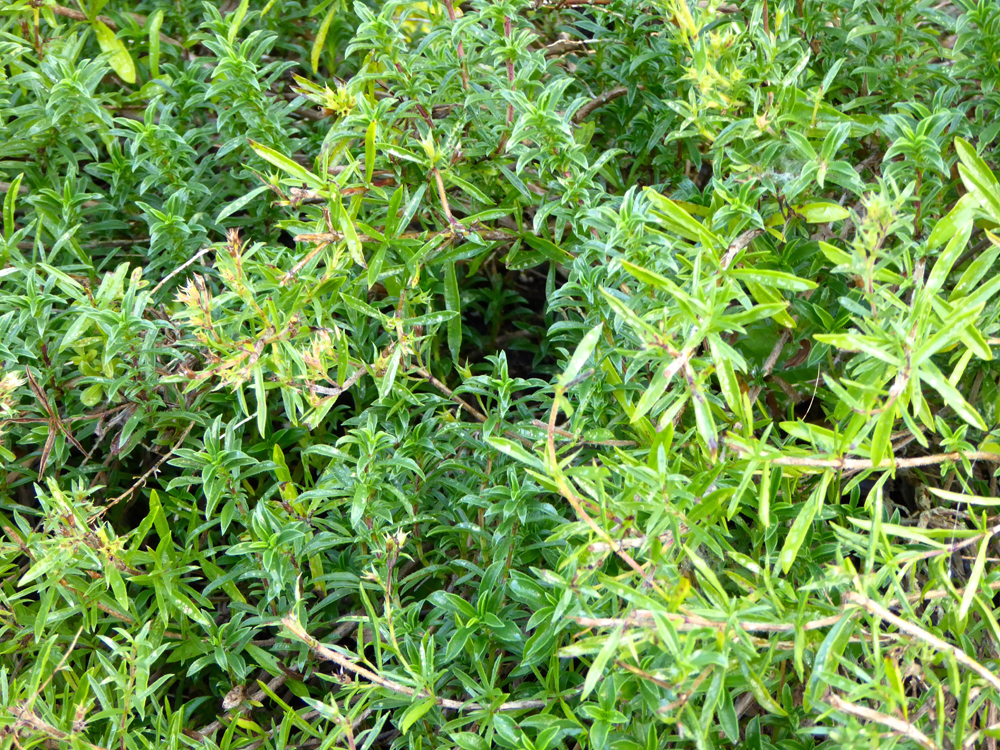
Winter savory is a hardy, evergreen sprawling shrub with branches that spread over the edge of a raised bed or container. It thrives in full sun in well-drained soil. Its leaves are small and pointed with a spicy aromatic flavour and it flowers in late summer to autumn with a mass of small pinkish white blooms. I use its leaves as a seasoning for long and slow cooked dishes and I have found the tips of the flowering stems are useful to soothe insect stings and bites. In my garden it has spread around 50cm over six years.
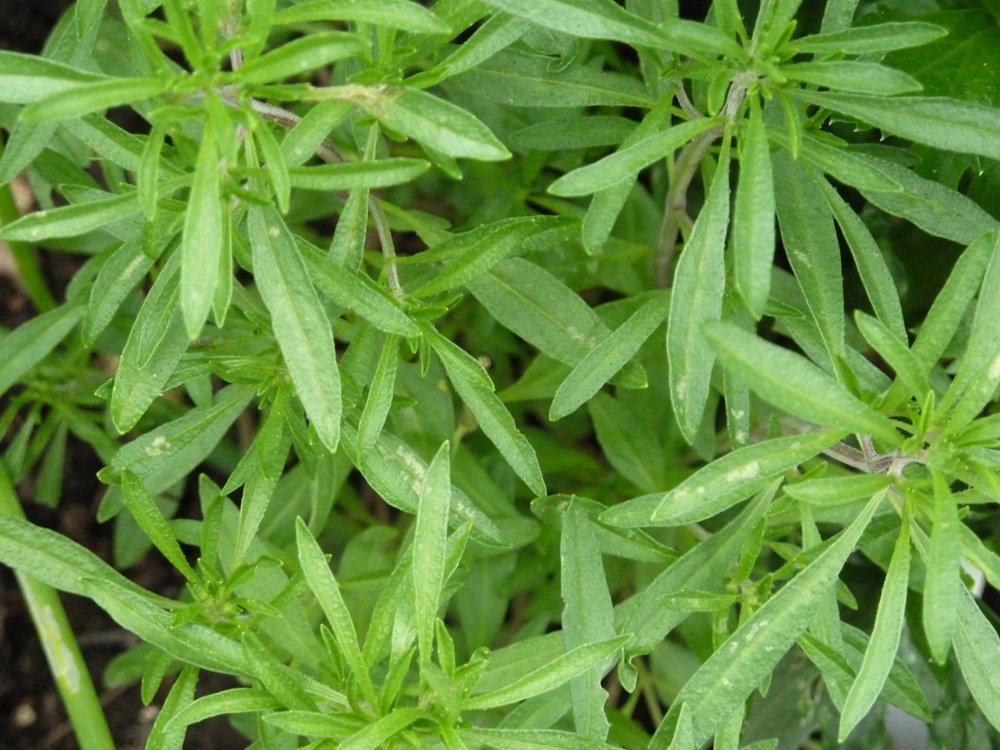
Summer savory is a half-hardy annual that can reach a height of 30cm in flower and 20cm spread. It will grow bushier if the growing tips are nipped out. On the Continent this is used in just about every dish cooked with beans. Broad, green or other beans like haricot or cannellini beans are enhanced if summer savory is added to the water when you cook them.
Sow seed outside when frosts have finished or sow in plug-trays and transplant when soil has warmed up. The whole plant is aromatic but use leaves before the white or mauve flowers appear.
Day 13 – Fennel
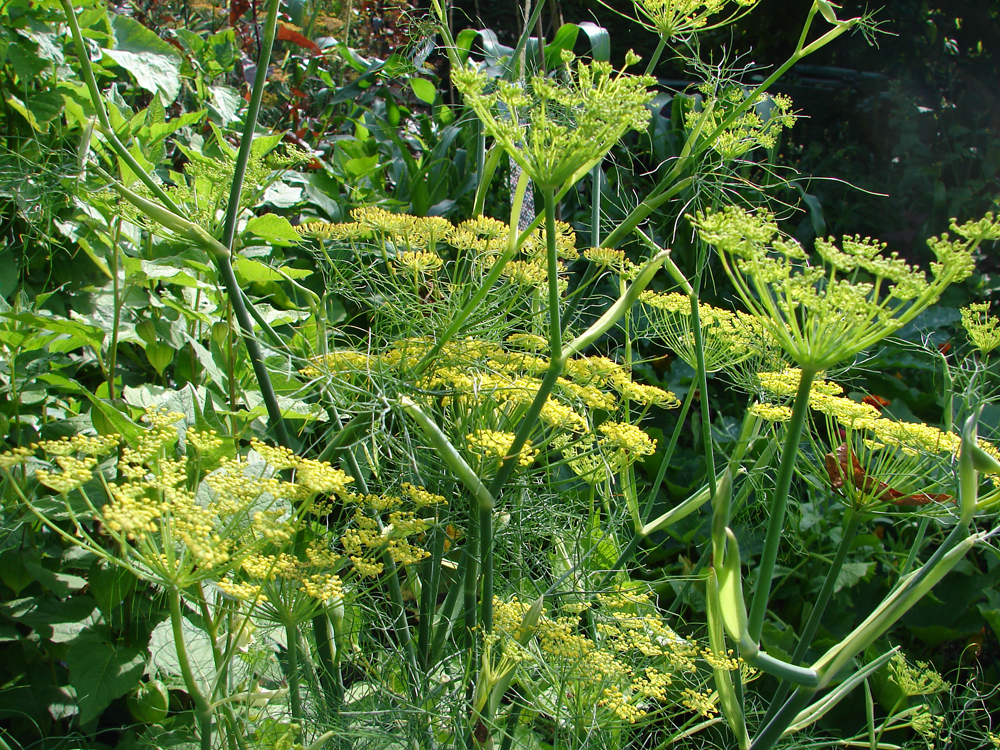
Today my choice is fennel (Foeniculum vulgare) with its aniseed, licorice flavour. It is one of those herbs that self-seeds readily, so once you have it, you have it! I have bronze fennel and the wonderful fresh green form. They both carry their mass of flowers in umbels on tall flowering stems, up to at least 1m and often up to 2m. And the flowers are bee and hoverfly magnets!
Fennel is a hardy perennial with feathery, fern-like bright green or bronze leaves. I usually cut it back in autumn and it shoots up again in spring. Some years I leave it standing and in a frost it takes on a whole new ornamental life!
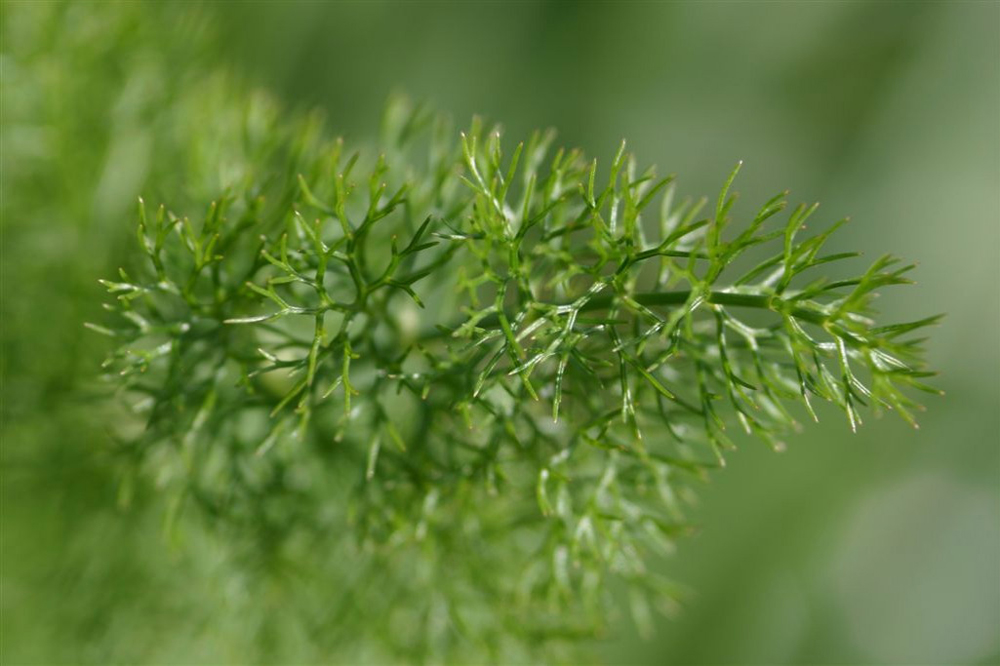
Its leaf texture and appearance make a useful contrast with conventional border plants and it has in recent years become a bit of a signature plant on show gardens up and down the country, including RHS Chelsea and RHS Chatsworth.
The leaves, packed with sweet aniseed flavour, make a great addition to fish dishes. For the simplest of ideas (as an alternative to dill), just add them to smoked salmon lying on some crusty wholemeal bread, smothered in cool cream cheese. Their flavour and colour will transform this classic combo. I use the flowers, just before they ripen into the hard, slightly curved seeds, in egg dishes and also mixed with plain yoghurt or crème fraîche. The leaves are also good snipped into salads.
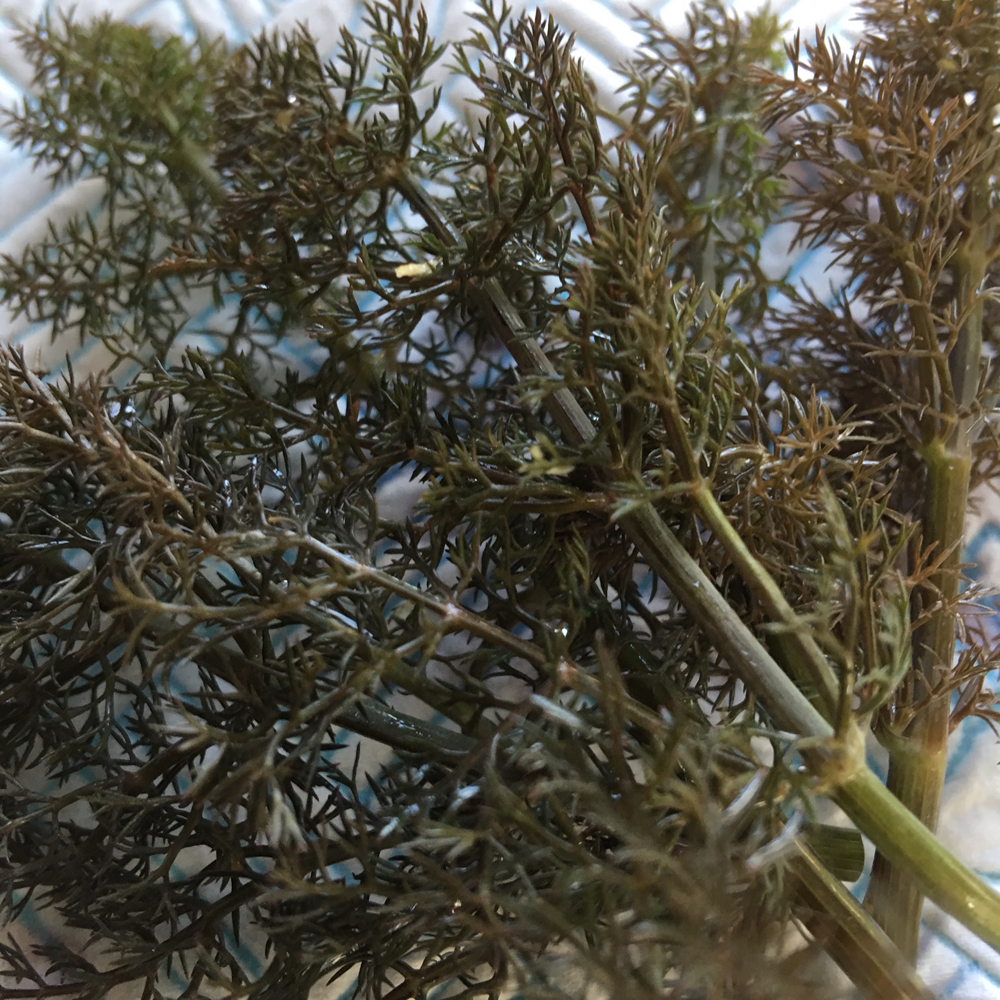
I pick leaves to use fresh from spring to autumn, and if I am harvesting for freezing, then I pick before the flowers appear in summer. I always harvest seed before it is fully ripe to dry for spicy dishes and for baking and bread mixes. I also use it in pickling and to make a spicy tea. Ground, they are also good in Asian-themed cooking.
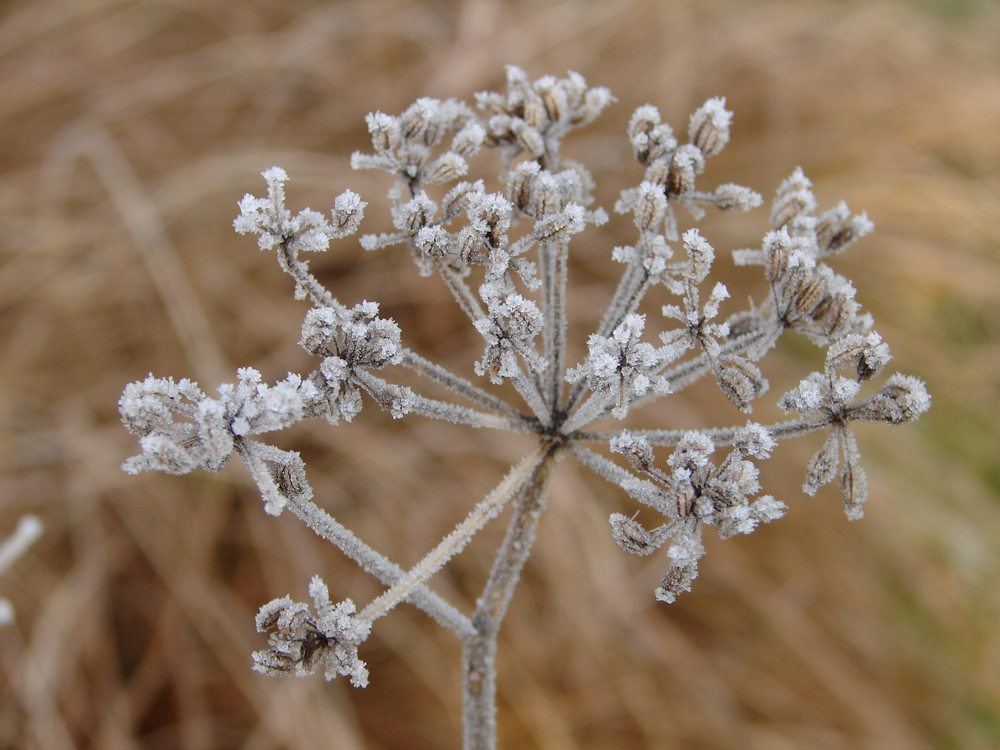
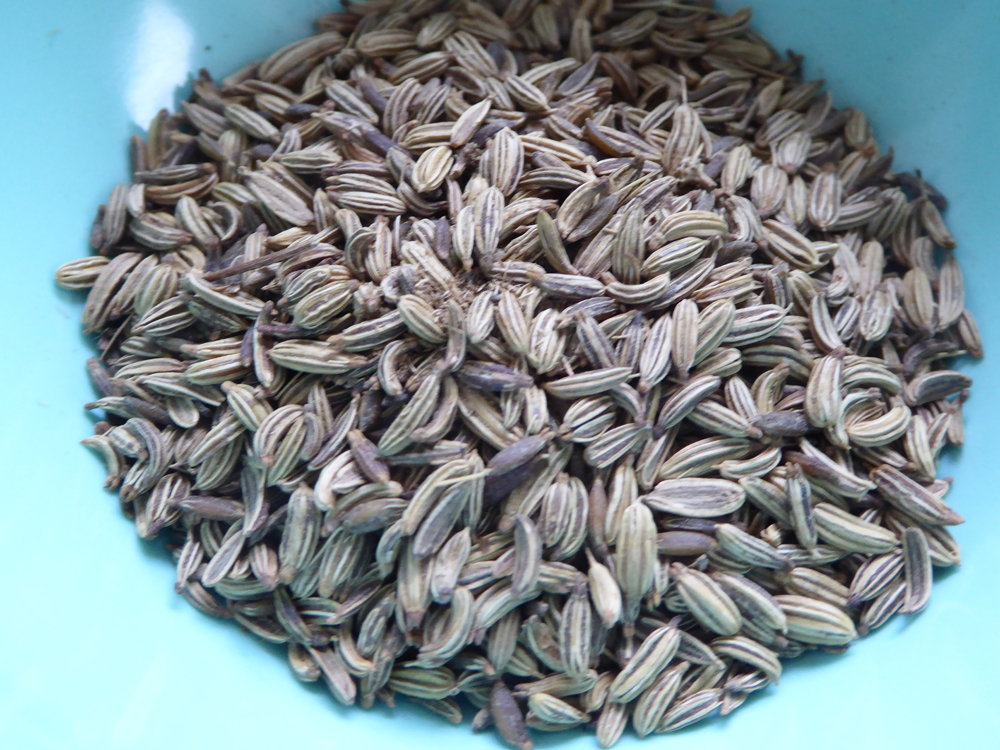
In summer when the flowers are just opening and the smudges of yellow pollen just visible you can shake it off into brown paper bags or direct onto food for a colour and floral taste burst. You can use the flowers as edible garnishes and if you leave them to open a little more on the plant, shake the pollen over a bowl of plain boiled rice. Flowers and pollen are great with pork dishes. As the flowering season is well over at this time of year I have been trying to source fennel pollen to use on its own or to mix with citrus zest and sugar to accompany poultry dishes. This is likely to be an expensive search!
Day 14 – Lemon grass

Lemon Grass (Cymbopogon citratus) is a perennial grass-like plant that is half-hardy in our climate. As its name suggests it has a strong lemon scent. In the greenhouse or conservatory it grows to about 1 metre tall. I grow it in pots and bring it outside in summer. I sow seed or buy pieces from the supermarket, stand them in water (as I would mint stems or cuttings) and let roots develop at the base (although this can be a bit hit and miss, depending on how much of the base has been chopped off and treated during harvesting). In containers I use a loamy mixture with added grit or sharp sand to make to the compost free-draining. And the key is not to overwater this one. So when it is outside I make sure it is not standing in water. I usually divide my established plants annually and replant in containers. At this stage I do a lot of clearing of old dead leaves and cut back the newly divided parts.
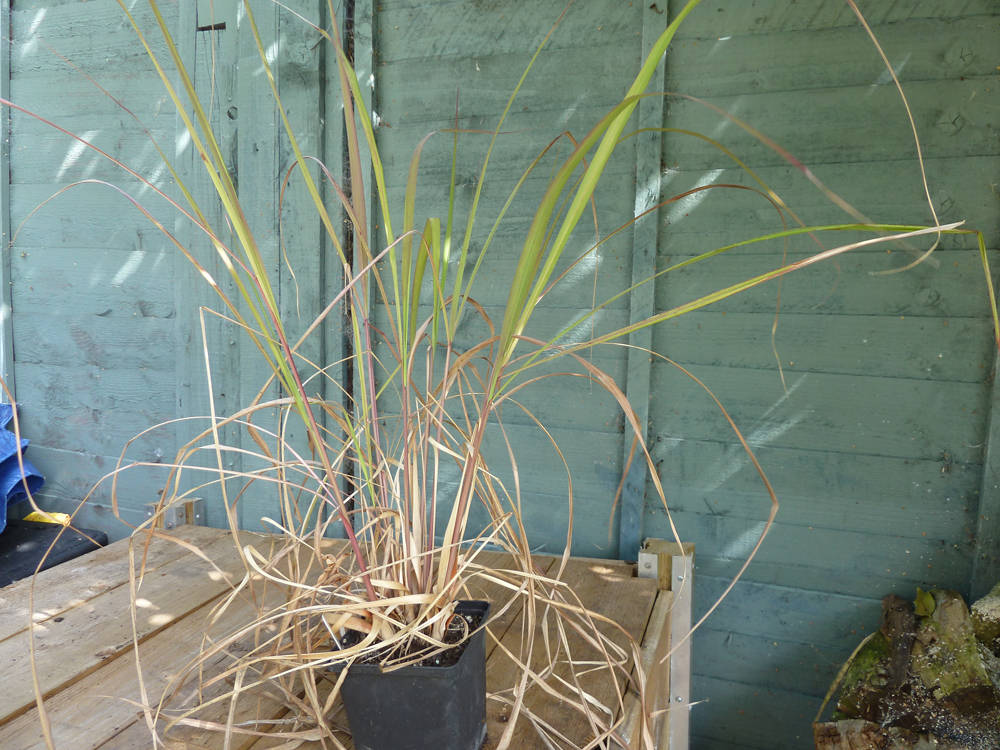
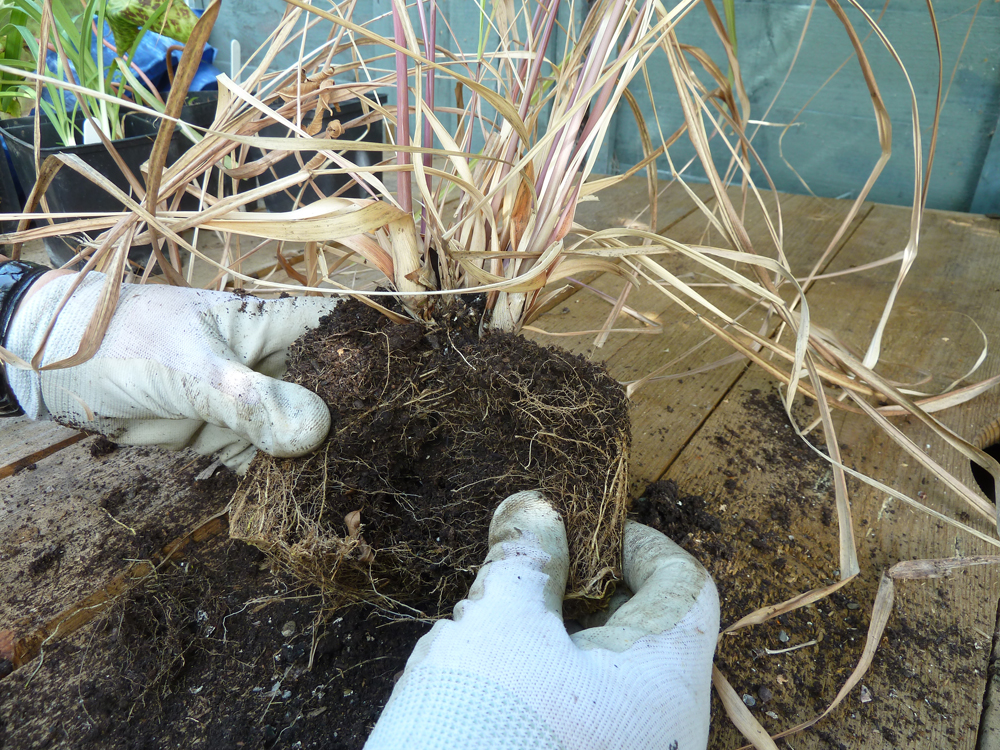
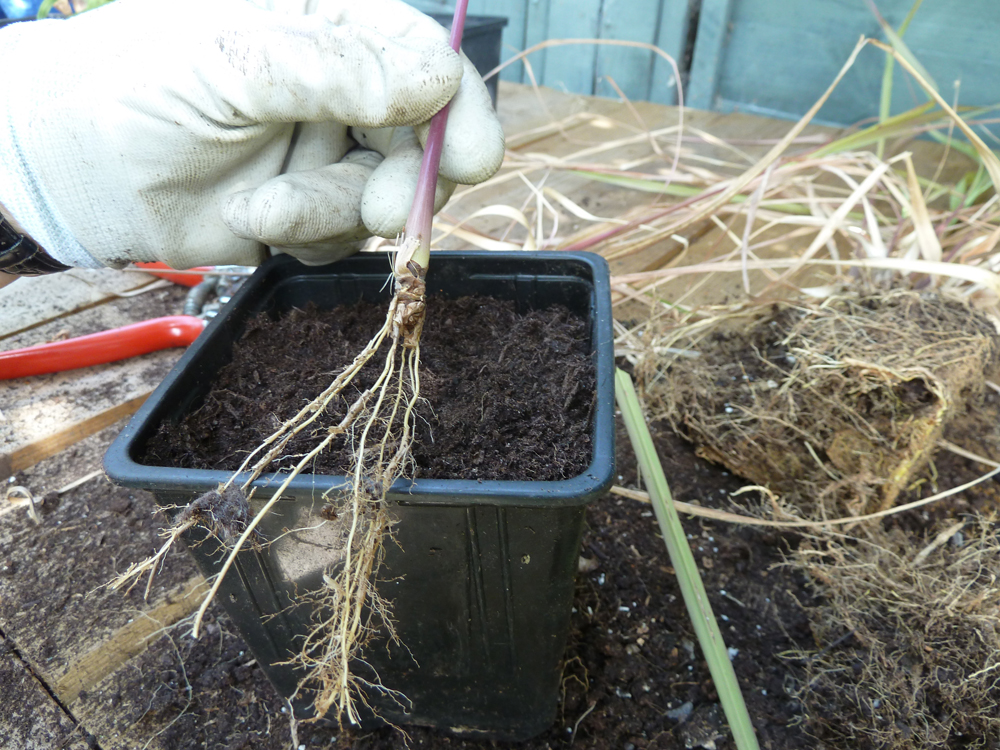
I harvest fresh young foliage and also use the rounded basal stems. The leaves have a rough and hairy texture and like the rounded stems should be thinly sliced.Lemon grass is used in so many different cuisines from Indian to Thai and adds a zesty flavour to hot spicy dishes as well as delicate fish dishes. It is equally useful in soups and combined with strong spices. I often use it with ginger and coriander in Thai-style fish or poultry soups.
Day 15 – Nasturtium
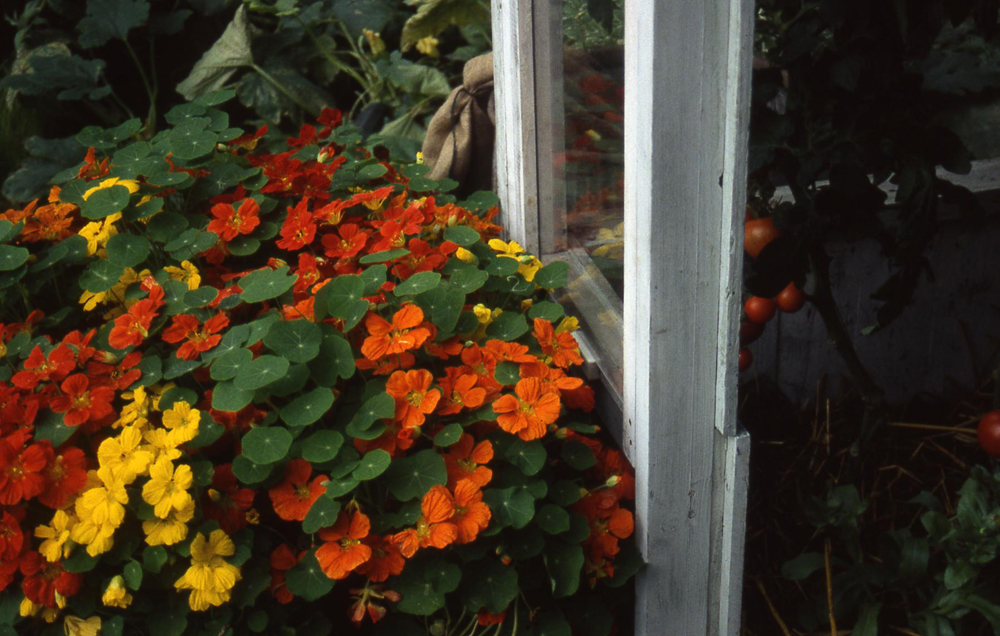
Today I am taking you back to high summer, or in my garden it seems just a few weeks ago, since this year nasturtiums (Tropaeoleum majus) flowered really late. A half-hardy annual with many cultivated forms that creep or are bushy so height and spread can vary. Height is usually 20-30cm and spread can be a metre or more depending on the variety. T.majus ‘Alaska’ has variegated leaves and yellow, orange to red flowers. ‘Cobra’ has dark almost purple-bronze foliage and strong orange-red flowers.
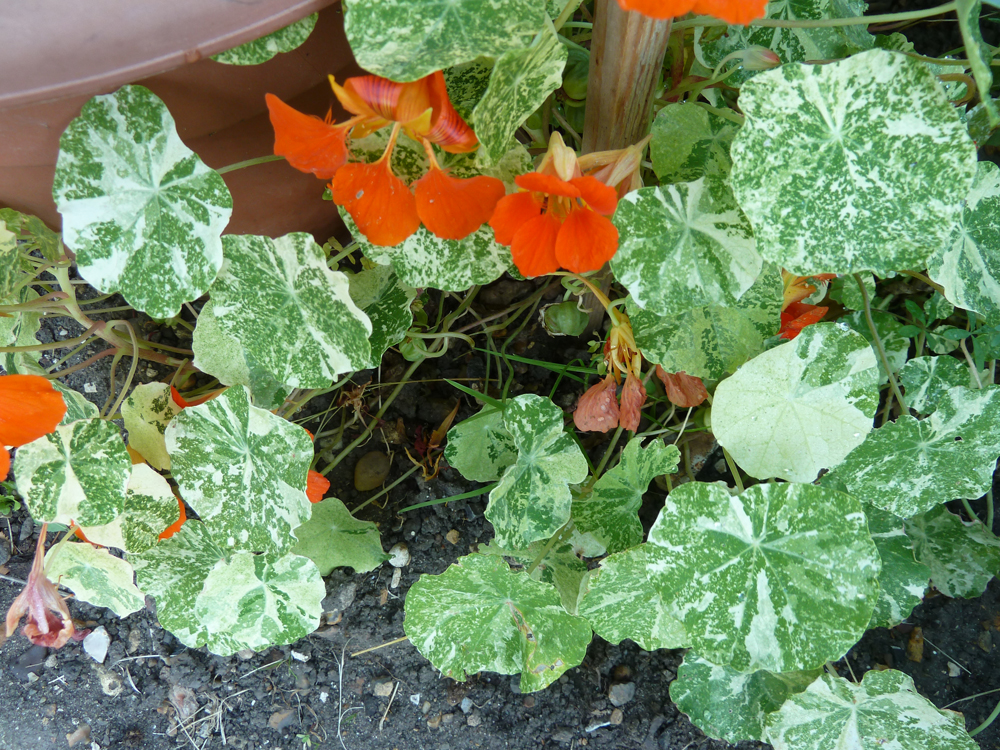
This is a good garden plant for the sunny garden and well-drained, poor soil. If the plants are too well fed, flower production will suffer. Sow early in containers or in situ when the danger of frost has passed. In full sun nasturtium is a great plant for a patio or balcony container. The plants are decorative in the garden, trailing and spreading where they like and they are good in hanging baskets. A major problem, though, is that cabbage white butterflies lay eggs on the undersides of the leaves and their caterpillars feed on the foliage, reducing it to a lacy finish!
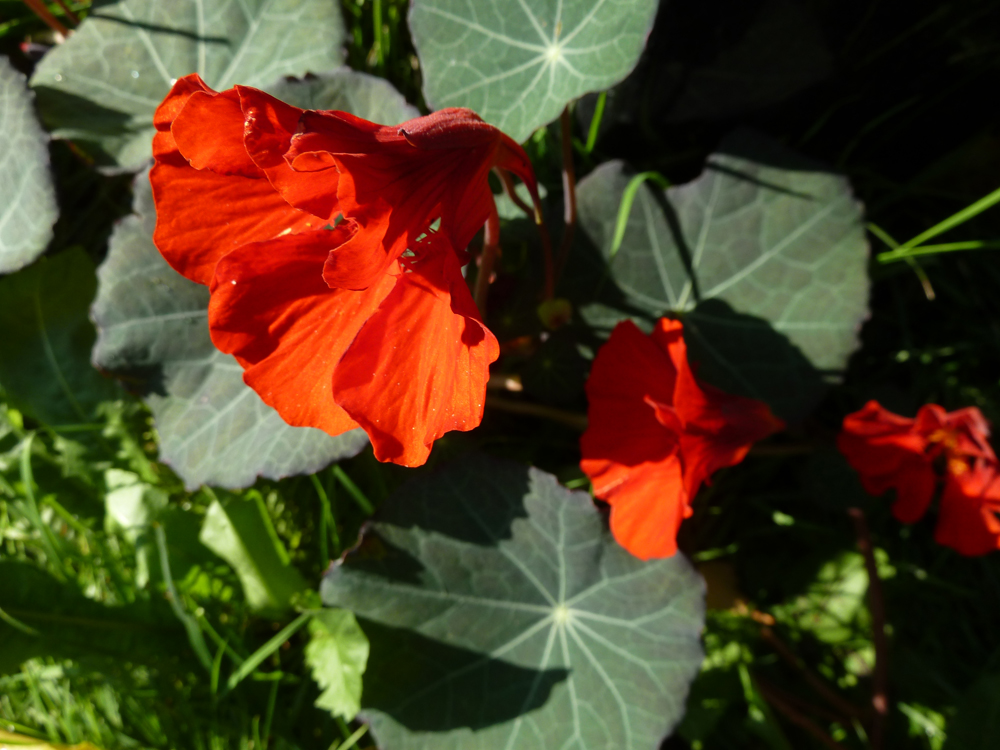
The flowers, leaves and seeds are edible and really useful if you need to avoid or reduce salt and pepper. The leaves add a peppery taste to salads. The flowers are also edible, although they need to be thoroughly checked for lurking insects. I use flowers and leaves in salads (variegated white and green leaves add extra visual zing) as well as their pepper flavour, and often use the flowers as colourful ‘envelopes’ to enclose a mouthful of soft cheese.
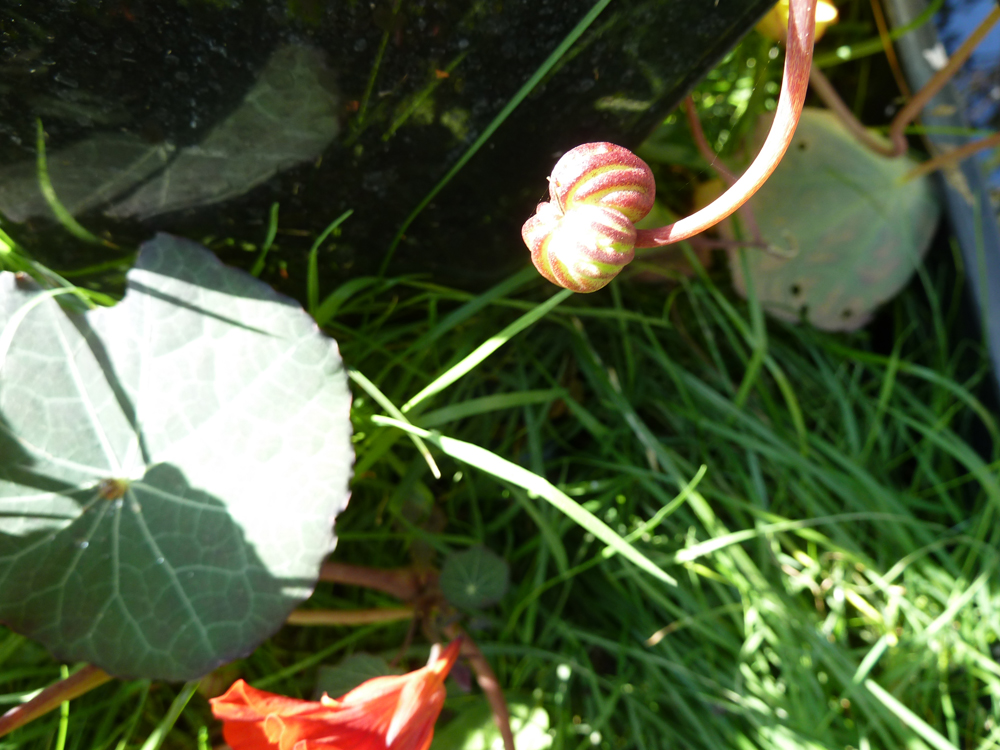
But I also leave a good quantity of flowers to set seed, since the seeds are a great substitute for capers and useful in adding peppery notes to pickles. If you are using them to make capers, collect them when they are green and keep them in a brine solution for 24 hours. Drain and pour sufficient hot, spiced vinegar to cover the nasturtium seeds. Let the liquid cool before bottling.
Day 16 – Chervil
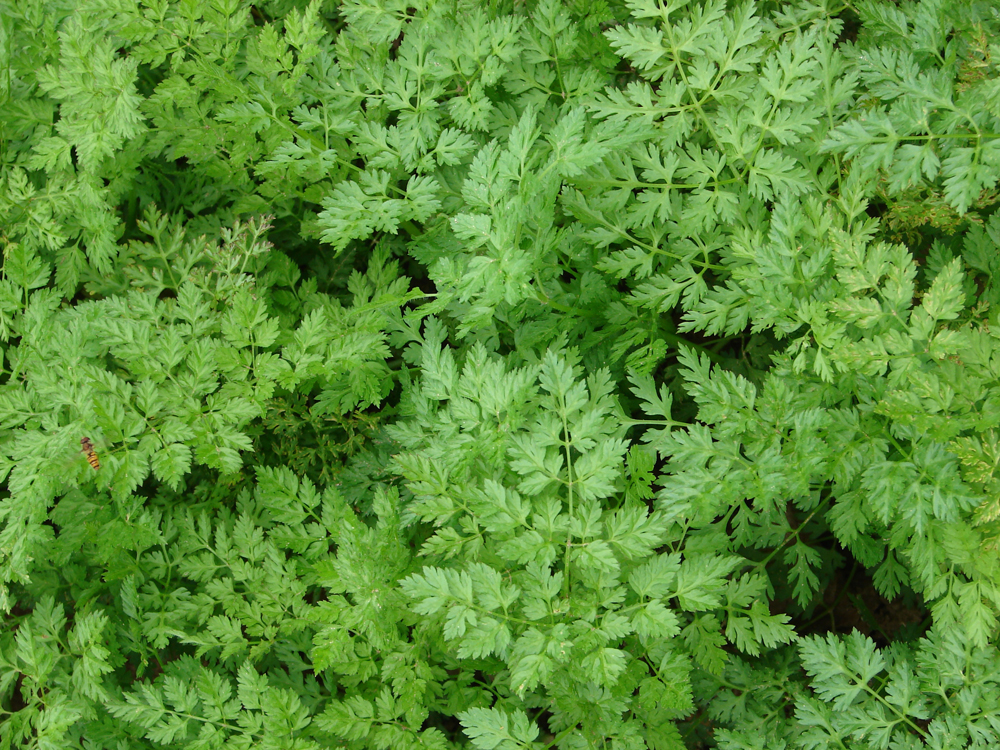
Chervil (Anthriscus cerefolium) is my ‘must-have herb’ for summer and over the winter. It is a hardy annual, height 30-60cm in flower (small white flowers, best not to use them, just the leaves), otherwise low-growing to 5cm. However, it seeds itself annually in my garden and so I have it year-round. Last winter I just covered lightly with horticultural fleece. If I want new plants I sow seed in a partially shady area so it produces leaves abundantly. In a hot dry climate it will go to seed prematurely.
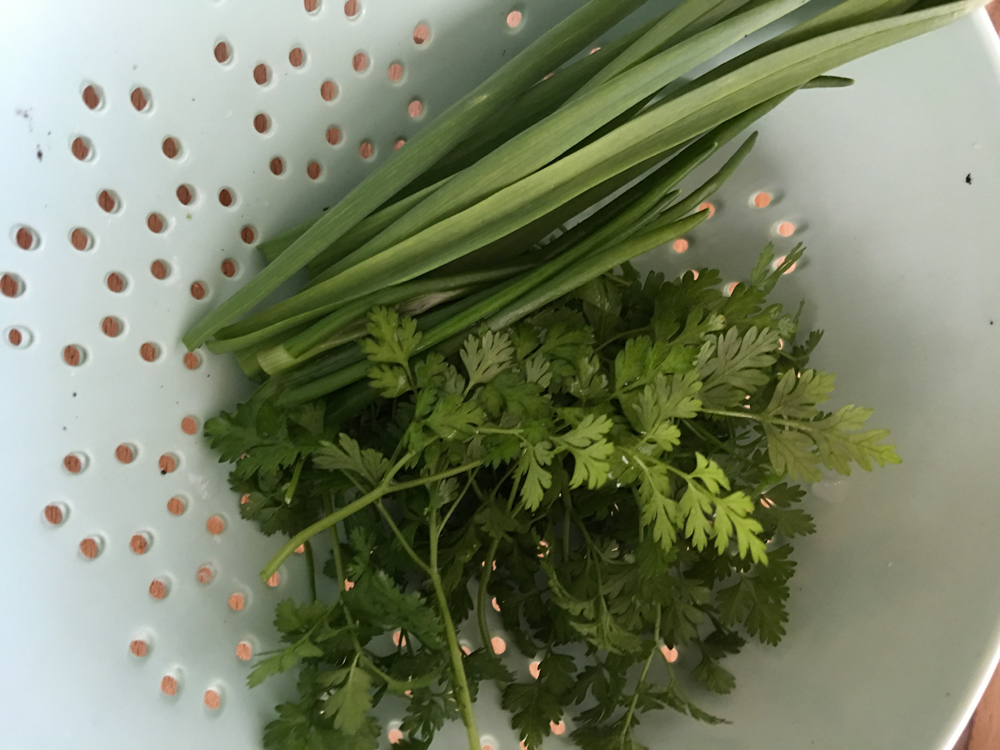
It has a fresh, aniseed flavour and lifts a salad to new heights. Its real mark is made in an omelette or in the classic French ‘fines herbes’ combination with chives, parsley and tarragon. I have combined it also with garlic chives, chopped (see image above) to add aniseed flavour to an omelette.
It is a lovely feathery ferny plant, lovely to look at, even when it is past it and gone to seed.
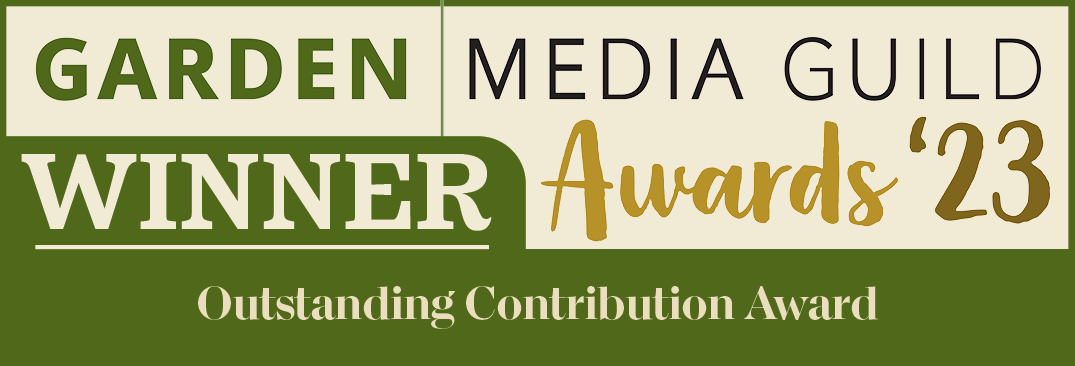

I really liked the list of herbs and the photos are wonderful. I’m off outside right now to give my lemon verbena in a pot a good mulch to help it through the winter. It survived last year and it thriving so I have hopes. thanks for a lovely blog.
Julie, thank you. Sorry I missed your comment in December… but I thank you for your words about the blogs. Here we are in March and it is blustery and grey outside but I harvested so many wonderful herbs and leaves yesterday from my raised beds. Some were just little shoots, but that is all it takes sometimes to lift a salad or an omelette to great heights. Hope your lemon verbena enjoyed the mulch and is surviving.
all best barbara